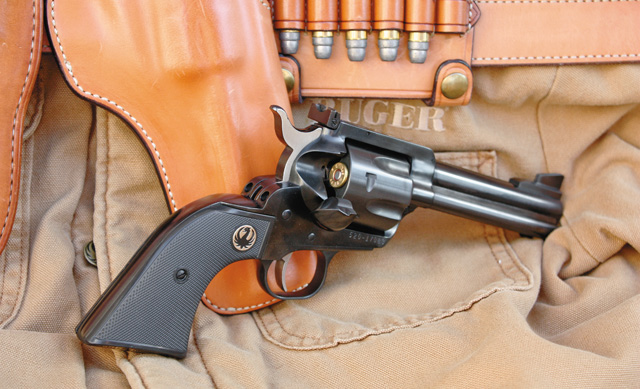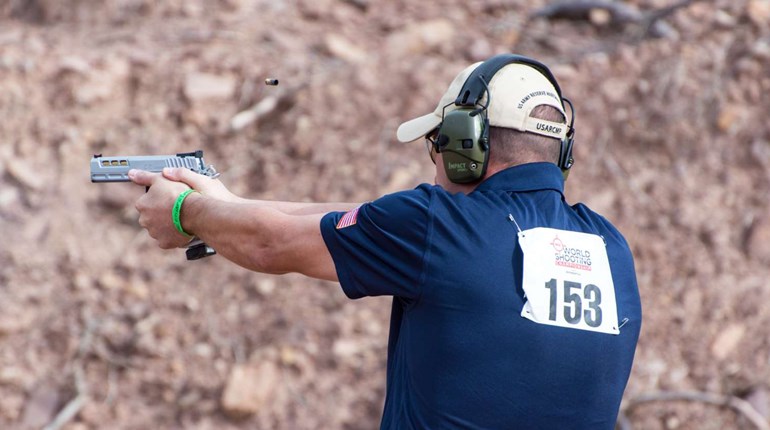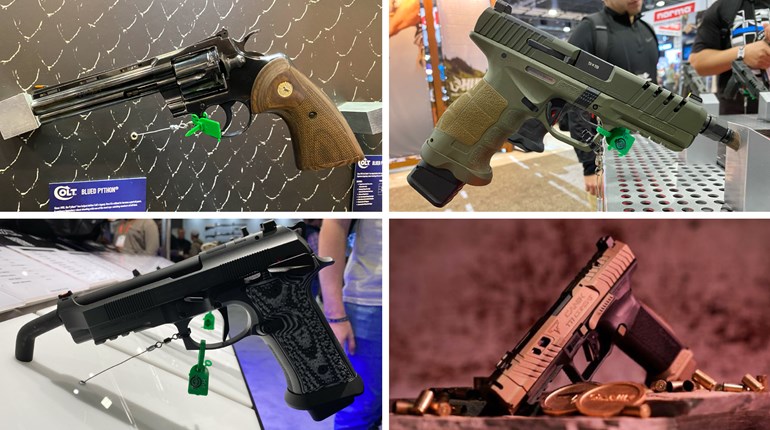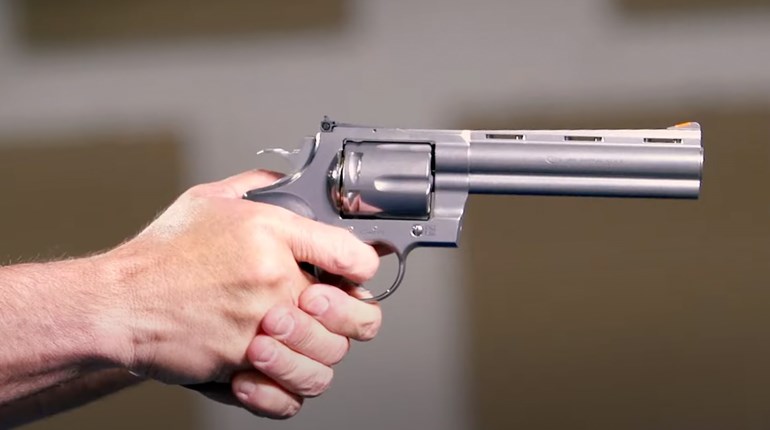
If you weren't shooting a magnum, you weren't shooting. What struck me as interesting about the word in my younger days was that almost all the experts acknowledged they mostly shot reduced loads. In fact, everyone joked about slightly used .44 Mag. revolvers being for sale with a box of ammo containing 44 unfired rounds. It wasn't until Clint Eastwood began making the "Dirty Harry" movies that demand for .44 Mag. handguns took off, and it wasn't until the late '70s, when handgun silhouette shooting became popular, that full-power .44 Mag. ammunition saw regular usage.
Tribute was paid to the .44 Spl. as being the test bed for .44 Mag. load development. In fact, the popular practice of shooting loads at 1,000 fps or less meant very few handgunners needed the magnum case's enhanced powder capacity and the larger guns it dictated. As much as I love the .44 Mag. for handgun hunting, I think way too many novice handgunners became enraptured with the magnum mystique instead of taking a close look at what the .44 Spl. can do when properly loaded.
When the .44 Mag. was introduced in the mid-'50s, Ruger beefed up its .357 Mag. Flat Top Blackhawk to handle the new round. To this day, many shooters of that era will tell you Ruger's original .357 Mag. Flat Top felt better than any single-action revolver before or since, with the possible exception of the Single Action Army. Many of us wished for a Flat Top in .44 Spl., but jumped on the .44 Mag. bandwagon and bought the slightly larger version. The grip was the same, so there was a recognizable feel to the new Blackhawk. But while the smaller .357 Mag. Flat Top was a joy to shoot, that wasn't necessarily true with the .44 Mag. Blackhawk and full-house loads.
When Ruger re-introduced the .357 Mag. Flat Top Blackhawk a couple of years ago, I wasted no time in fulfilling the old .44 Spl. dream. I purchased one of the new guns and sent it to John Gallagher, who did his magic and returned it as a .44 Spl. Before I could get serious about testing the .44 Spl. conversion, Ruger announced another Flat Top built on the .357 Mag. frame, this time chambered in .44 Spl. After decades of wishing, I immediately placed an order.
Both of my .44 Spl. Flat Tops have a short, 4.75-inch barrel and black, plastic grips with the Ruger logo. In his conversion, Gallagher retained the Ruger "Micro" adjustable rear sight, but changed the front blade shape. He also installed an oversized cylinder pin with a setscrew that must be loosened to remove both the pin and the cylinder.
A major change Gallagher frequently incorporates is a cylinder that turns freely in either direction when the loading gate is opened. This is a popular and useful feature on big-bore single-action revolvers when their owners shoot powerful loads with heavy bullets. On occasion, recoil may cause the heavy slugs in the last round or two to slide forward in the case, making it impossible to rotate the cylinder and bring the longer rounds in line with the barrel. Without the ability to rotate the cylinder in reverse, fixing this problem necessitates removing the entire cylinder from the gun, something not easily accomplished with a bullet extending in front of the cylinder face.
Even for normal loading and unloading, this dual direction, free-wheeling feature is nice to have, whether or not you will be experimenting with heavy bullets. This is also a popular modification on old-style Rugers, where the cylinder chambers do not line up with the ejector rod. The new .44 Spl. Flat Top has a reverse-indexing pawl that solves this problem and brings a bit of joy back into the single-action loading/unloading process. Finally, Gallagher did his usual action-polishing tricks to make the downsized .44 especially smooth, although to be honest, the factory .44 Spl. Flat Top has one of the nicest out-of-the-box actions I can remember in quite some time.
My plan was to do some handloading for the two little .44s and get the cartridge's performance on par with the loads most folks regularly shoot in their .44 Mag. revolvers; muzzle velocities of 900 to 1,100 fps were my goal. It turned out that wasn't necessary since all the factory loads I tried were in that range. The lightest bullet I tested was Hornady's 180-grain jacketed hollow point, and it came out of the short barrel at 932 fps. Speer's 200-grain Gold Dot hollow-point load achieved 900 fps, while Blazer's 200-grain jacketed hollow point yielded 953 fps. Federal's 200-grain lead hollow-point load looks like an old .44 Spl. round should and generated an impressive 963 fps. If you really want to jack up the performance, try either of Buffalo Bore's two loads. The 185-grain jacketed hollow point smoked over the screens at 1,299 fps, while the big 255-grain cast bullet gave an impressive 1,106 fps. Surprisingly, recoil was not abusive in any of these loads despite the power they generated.
A couple more comments on the size difference between the .44 Spl. and the .44 Mag. Blackhawk Flat Tops are in order. While you can immediately see the difference in cylinder length when the two guns are held side by side, it's the difference in how the guns balance and feel that counts. I confirmed the grip size on all the new Flat Tops is identical by interchanging the grip panels. I couldn't detect any difference, no matter which grips went on which gun. But once in your hand and held at arm's length, you can definitely feel the magic. When you pull the trigger on a load that is truly .44 Spl. rather than .44 Mag., you'll enjoy and appreciate the older caliber even more.





































